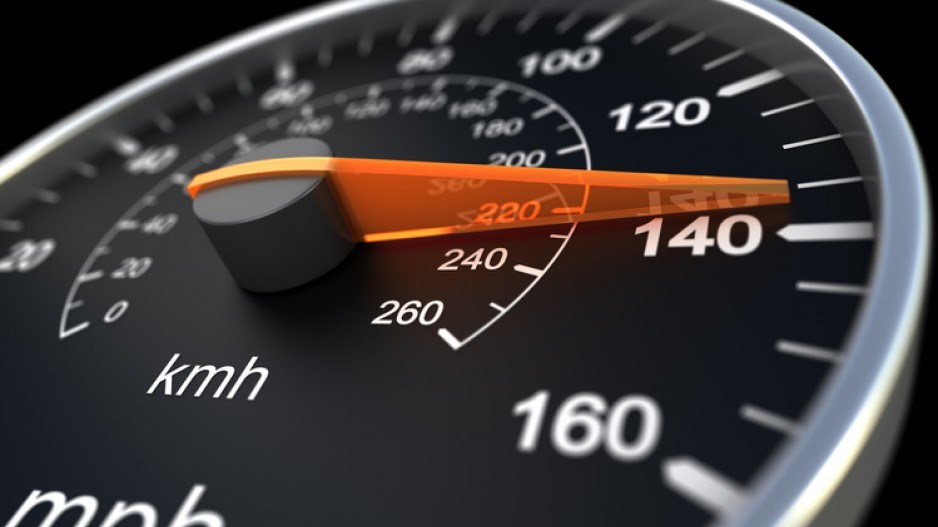A few months ago, drone videos of empty streets in Europe served as a stern warning about what life at the height of the COVID-19 pandemic would look like.
Stores were closed and plazas had no tourists walking about. In North America, it took a few more weeks for vehicle traffic to dwindle considerably in most municipalities, as the need for social distancing kept individuals away from offices, restaurants and stores.
British Columbia is now preparing for Phase 3 of the COVID-19 restart plan, which will allow for what is described as “smart and safe” travel within the province. This will likely put more vehicles on our streets, as economic activity is slowly reactivated. On an anecdotal basis, we may already be noticing more vehicle traffic near our homes.
In 2018, Research Co. and Glacier Media began tracking the views of British Columbians on the concept of automated speed enforcement, essentially a reliance on technology to make sure that drivers are abiding by existing regulations. In many jurisdictions around the world, cameras or sensors are used to notice when a vehicle is speeding. A ticket is then issued to the vehicle’s owner, but no licence points are lost because the vehicle’s driver is not identified.
In 2020, we continue to see a high level of support across the province for four different types of automated speed enforcement. Seven in 10 British Columbians (71%) approve of using fixed speed cameras. These devices stay in one location, measure speed as a vehicle passes and can be placed in school zones or on other roads. This year’s findings are remarkably consistent with what the province’s residents told us in the 2018 survey (71%) and in the 2019 poll (69%).
Last year, the provincial government ordered the conversion of 35 existing red-light cameras into speed-on-green intersection cameras. These devices are now adequately equipped to capture vehicles that are speeding through intersections. In April, the province announced that more than 20,000 tickets had been issued through this type of automated speed enforcement.
Almost a year after these cameras were reactivated, public support for their use remains strong, with 70% of British Columbians endorsing speed-on-green technology on our roads. This is also consistent with the provincewide findings of the past two years (68% in 2019 and 70% in 2018). Speed-on-green intersection cameras are particularly well received by women (74%), residents of Vancouver Island (also 74%) and British Columbians aged 55 and over (77%).
While the cancellation of “photo radar” was one of the first items of business for the BC Liberals after forming the provincial government in 2001, things are different almost two decades later. Large majorities of British Columbians who voted for the BC New Democratic Party (NDP) (76%), the BC Liberals (74%) and the BC Green Party (65%) in the 2017 provincial election are in favour of speed-on-green enforcement.
Most of the province’s residents would also welcome different measures that have not been openly contemplated by the government yet. Two-thirds of British Columbians (68%) are in favour of mobile speed cameras. These devices can be moved from place to place and measure speed as a vehicle passes. The level of support for this type of automated speed enforcement was 63% in 2019 and 65% in 2018.
The most contentious form of automated speed enforcement is point-to-point, which relies on cameras at two or more distant points on a road. The average speed of vehicles that pass between points is calculated and tickets are issued to vehicles whose average speed over the distance was excessive. Approval for this type of automated speed enforcement has reached the highest level recorded (58%), up from 55% in 2018 and 51% in 2019.
It is important to note that the views of B.C. drivers fluctuate from the provincewide averages by one point or less when it comes to these four types of automated speed enforcement. This is not a situation where pedestrians, bike riders and public transit users are banding together to make things tougher for drivers. Sizable majorities of the province’s residents, whether they are behind the wheel or not, have steadily endorsed a move towards automated speed enforcement for the past three years.
Results are based on an online study conducted from June 13 to June 15, 2020, among 800 adults in British Columbia. The data has been statistically weighted according to Canadian census figures for age, gender and region in British Columbia. The margin of error, which measures sample variability, is plus or minus 3.5 percentage points, 19 times out of 20.



